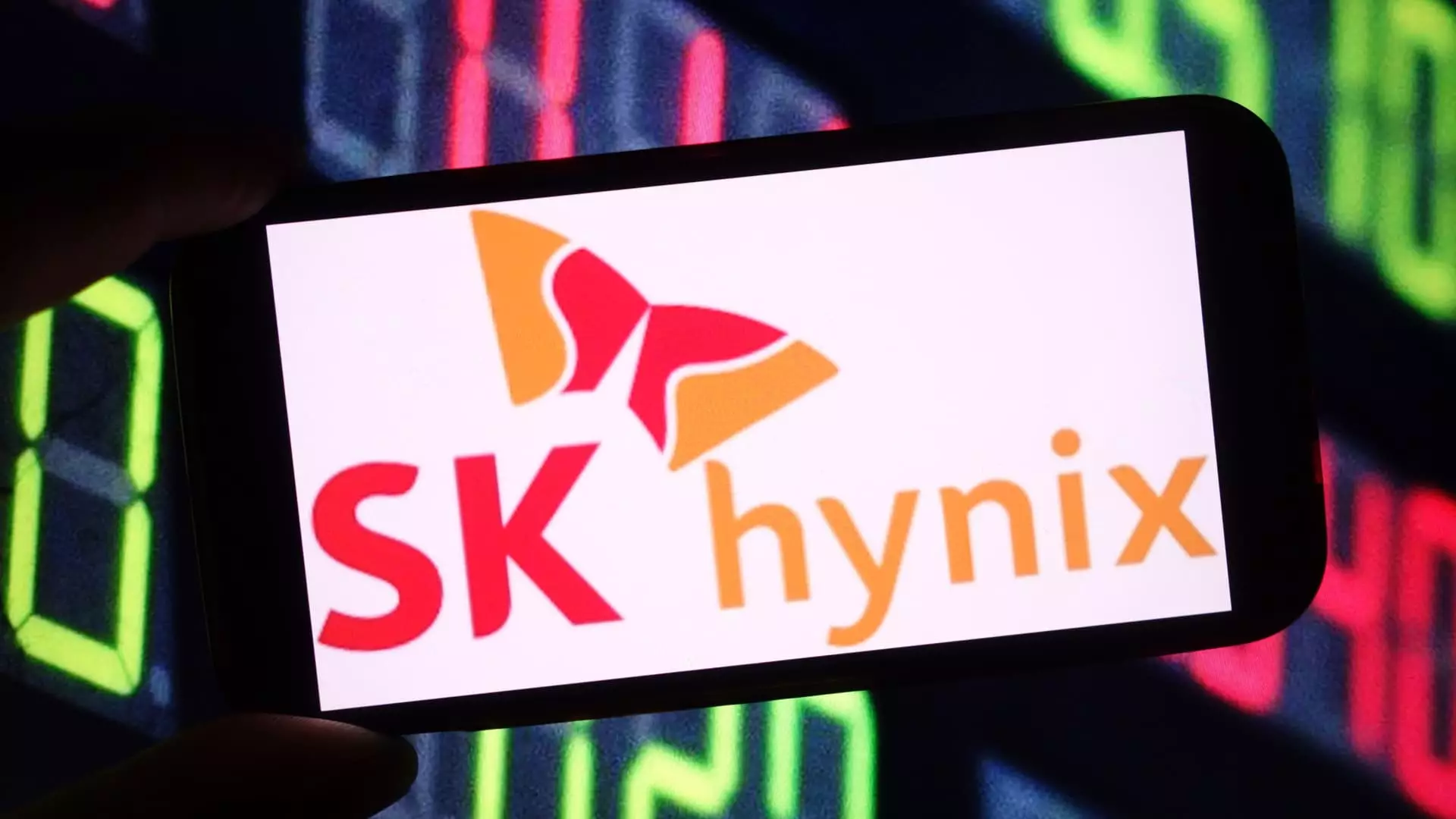In an era marked by uncertainty and economic turbulence, South Korea’s SK Hynix has managed to shine brightly, recently unveiling a quarterly performance that defies daunting market conditions. With merchandise grossing an impressive 17.64 trillion won ($12.36 billion), surpassing estimates, the semiconductor giant also revealed operating profits of 7.44 trillion won—up by a staggering 158% year-on-year. This remarkable surge in profitability signals a resounding endorsement of the booming demand for high bandwidth memory (HBM) chips, which are increasingly pivotal in the burgeoning landscape of artificial intelligence (AI).
Should it come as any surprise that such growth stems from the rapid expansion of AI applications? The ongoing technological chase for advanced, efficient computing solutions is only intensifying. The likes of generative AI capabilities necessitate potent memory architectures, and Hynix is positioning itself as an indispensable player in this sector. Despite the quarterly revenue falling 11% compared to the record-breaking figures of the previous quarter, the substantial year-on-year increase emphasizes that the seeds of excellence have been sown and are beginning to bear fruit.
Volatile Demand Amid Macro Concerns
However, amid celebration lies a shadow of caution. SK Hynix has openly acknowledged the volatile demand landscape prompted by macroeconomic uncertainties. As tariff policies continue to cast a looming shadow, the potential for demand fluctuations raises eyebrows regarding the sustainability of this stellar growth. One cannot help but wonder: as much as we celebrate current triumphs, should we not also interrogate the long-term viability of such achievements in an unreliable economic climate?
The stark reality is that while the present is lucrative, it is fragile, and stakeholders must prepare for the turbulence that may lie ahead. Hynix portrays optimism about Big Tech’s ongoing investments in AI, suggesting that further expansion fostered by open-source AI initiatives and government-backed “sovereign AI projects” will continue to stoke demand for memory solutions. However, optimism does not equate to certainty.
Competitive Landscape and Future Prospects
As SK Hynix capitalizes on this AI-driven growth trajectory, it remains to be seen how it will manage increasing competition from established players like Micron Technology and Samsung Electronics. The memory market is notoriously cutthroat, and those who comprehend the mind shifts in technology will ultimately thrive. Will Hynix secure its leading position as the gatekeeper of AI memory offerings, or will it be eclipsed by rival companies carving out their own niches in this high-stakes game?
The company aims to leverage its existing relationships with industry giants, including Nvidia, as leverage to penetrate deeper into AI architecture demands. Positioned strategically as a provider of HBM to the AI server revolution, SK Hynix could emerge not merely as a participant but as a pioneer in defining what the future of memory looks like in an increasingly AI-centric world.
The ongoing trajectory of SK Hynix poses critical questions about how technological advancements will unfold against a backdrop of economic unpredictability. This dynamic interplay of innovation and risk deserves close scrutiny as stakeholders navigate through these exhilarating yet precarious waters.

